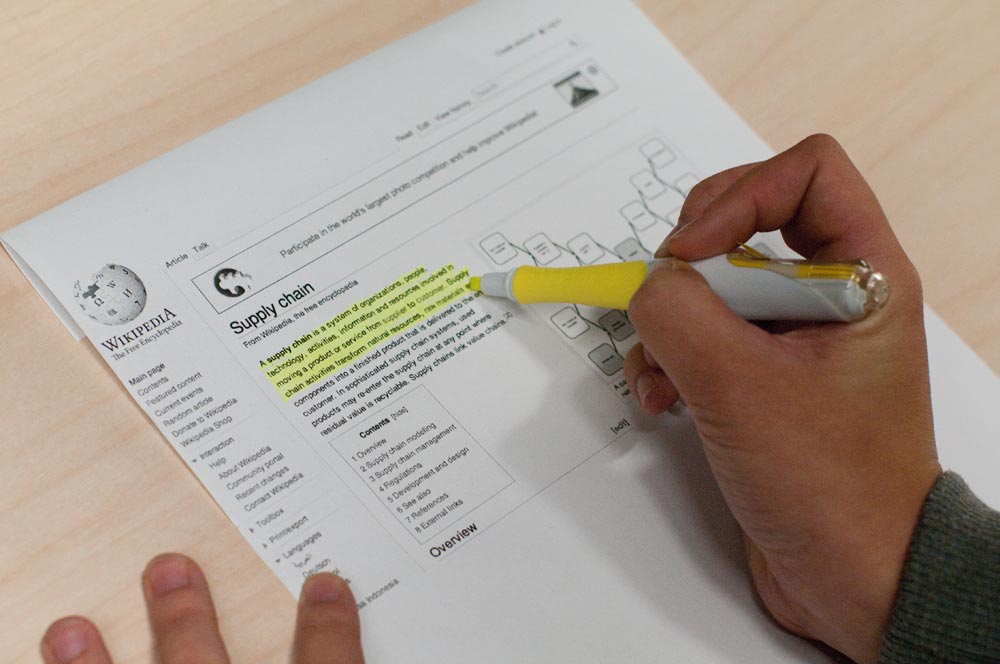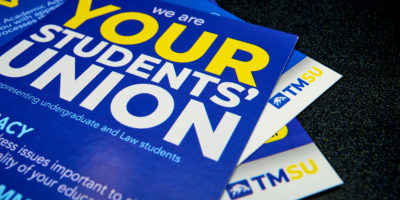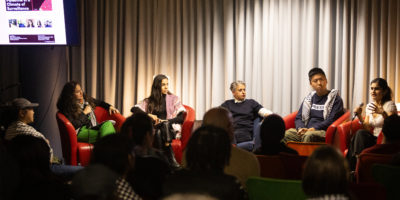By Mohamed Omar
Online Editor
The Eyeopener has obtained four PowerPoint presentations used in a Ryerson business course that include copied and uncited material. The presentations were prepared by the course’s professor and acquired from a student.
Kirk Bailey has taught Global Management Studies (GMS) 401 since 1976, and is a tenured operations and supply chains management professor. He presents these slides to his class and distributes them via Blackboard.
Some of these slides contain unquoted and unreferenced paragraphs, articles and definitions from Wikipedia and a host of other websites. Few of these slides contain links to the original pages. Bailey said he has never been advised by the university as to whether he should cite online sources in his in-class material.
“[There are no policies] that I’m aware of,” Bailey said. “I’ve been here for 36 years.”
Ryerson’s Student Code of Academic Conduct, or Policy 60, defines plagiarism for students as “copying another person’s work (including information found on the Internet and unpublished materials) without appropriate referencing” and “presenting someone else’s work, opinions or theories as if they are your own.”
These definitions are aimed at students and there is no definite rule on whether professors should cite in-class material or not. Instead, the university provides loose guidelines, or “best practices” for preparing PowerPoint presentations.
“The standards for PowerPoint presentations and the standards for class material are in no way clarified in the same way that publications are,” said Teddi Fishman, Director of the International Center for Academic Integrity. “I would say that this is one of the most contended areas in citation that we have right now because people just don’t know.”
Unlike students, professors don’t have to cite their sources in presentations because they can tell when they are factual or not, according to Fishman.
“If a professor has internalized the information, in other words it’s a part of his or her field…then it’s really not reasonable to expect them to cite every piece of that information,” she said.
Based on this notion, Bailey is not required to cite material directly relating to his field. However, he said he did not know that three consecutive slides in his presentation were directly copied from a 1994 MIT Sloan Management Review article.
A slide titled “General Motors Engineering Transmission” used content from a message on realoldspower.com, a car forum. The entry, made by user “daveh” from Brighton, Michigan, was posted in September 2009. The user signs his posts with Dave and says he’s retired on his user profile. There are no references, links, or quotations in the slide that Bailey used.
“I wasn’t aware of the source,” Bailey said. “I found it somewhere on the Internet.”
Fishman said a list of guidelines, known as ‘Best Practices,’ recommend that professors should reference their material, regardless of whether it’s in the public domain or from a scholarly journal.
“If they’re using word-for-word material, then best practices say they should cite it. One of the most important reasons [to cite] is to show students that that’s really part of being a scholar, to let people know where your ideas came from.”
Avner Levin, the vice provost of faculty affairs, said professors should “respect all the rules that exist…even if Policy 60 doesn’t apply to them.”
Ryerson does not have formal citation standards for in-course material such as PowerPoint presentations.
However, the Ryerson Learning and Teaching Office provides a guide for faculty on how to create effective PowerPoint presentations. The tutorial lists 10 ‘Best Practices’ tips, with the last one recommending professors to cite their sources, although it is not required.
“We don’t have an MLA handbook for citation in the classroom,” Fishman said. “We need to evolve to that place.”
Bailey agreed.
“[We have citation policies] for students handing in things,” Bailey said. “We should be equally responsible.”
[nggallery id=59]











Teddi Fishman
Thanks for an article on a complicated subject!
Just a few points of clarification, if I may: The point in paragraph 8 was meant to address the use of Wikipedia, not citation. I was explaining that for a professor (or other expert) to use a definition from wikipedia (to help explain or define something) is different from students using it as a source in a paper. Students should go beyond wikipedia to make sure they’ve found credible information. Subject-matter experts are better positioned to make that call–to know whether the wikipedia definition or information is accurate–and to use it as supplementary material to help explain complex phenomena to more general audiences.
The point in paragraph 9 addresses the differences in what counts as “common knowledge” to a student vs. a professor. By the time they earn their PhDs, professors will have internalized many facts that they can rattle off without consulting a source or looking them up. For students, that same information has not yet become part of what they know (without consulting a source.)
Thank you again for giving an in-depth look to a complicated issue.
Kind regards,
T. Fishman
Trevor
Ms. Fishman,
In regards to your comment on common knowledge and how “professors will have internalized many facts that they can rattle off without consulting a source or looking them up.” Student can do that as well. If a student has a hobby or interest there are certain things that they just know, they don’t need to look it up on the internet, they have just remembered it from their past experiences. I get flak for putting facts in papers and assignment without sourcing them, but I just know them. How is this any different?
Your thoughts would be appreciated.
Cheers,
Trevor
JKH
I had Prof. Bailey for Operations Management back in 2009. This is just the tip of the iceberg. Sit in on one of his “lectures” and hear about the man at the GM plant who complained that the women on the assembly line had easier work than him but really they just made it look easy because they were good at their job. That’s a classic. Heard it 5 weeks in a row before I stop paying attention and made origami out of the literally HUNDREDS of useless COLOURED PAPER hand outs given in every class.
And yes, the handouts were useless because the exams consisted of a few stories out of the $100+ textbook and the formulas that he actually had to teach in class. But if you didn’t even learn that, don’t worry, everyone cheated on the final. He just told you to talk quieter.
None of this matters though because no one wants to be the snitch who ruined the easy credit.